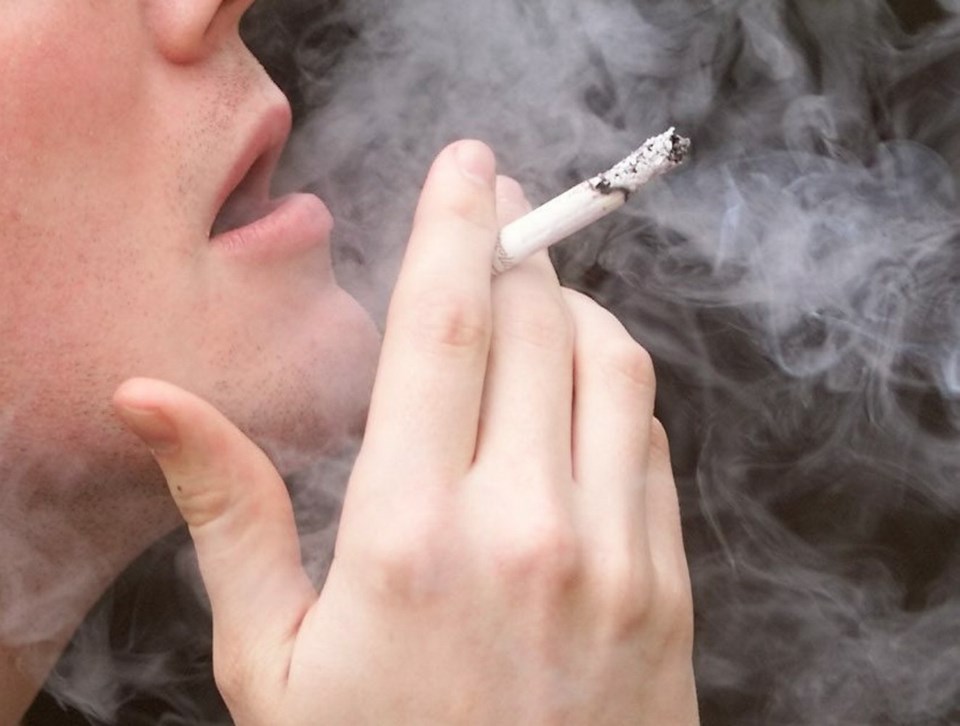A quarter of the cigarettes at Camosun College are contraband. Ditto for a fifth of the smokes outside Royal Jubilee Hospital.
In fact, 17 per cent of the cigarettes found around B.C. are sold illegally, says the Western Convenience Store Association.
The retailers group has just released the results of a study it commissioned, one that involved examining the markings on discarded cigarette butts in 48 locations around the province, including five in Victoria.
If the sampling is accurate, it means the provincial government is losing $120 million a year in tobacco taxes, says association president Andrew Klukas. “That’s a lot of money that could pay for schools and doctors and nurses.” Untaxed cigarettes, selling for perhaps half the retail amount, are particularly popular where young people are found.
Klukas says he’s a little surprised by how high the B.C. numbers are. Black market butts have traditionally been a much bigger problem back east.
A few years ago, the federal government estimated that half the cigarettes in Ontario were contraband, the product of factories on the U.S. side of reserves straddling the international border, but a crackdown is thought to have brought that figure down dramatically. (The RCMP, which has focused its anti-smuggling efforts on organized crime gangs in the St. Lawrence Valley region, seized 598,000 cartons and unmarked bags of cigarettes in 2011, according to its website.)
Previous studies showed the contraband rate dropping as you moved west — 14 per cent in Manitoba, 10 per cent in Saskatchewan — but the B.C. numbers appear to have been pushed up by a second source of smuggled smokes: Asia. Note that in 2010, the authorities broke up a gang that ran half a million cartons of counterfeit cigarettes into Canada from China.
No surprise there. B.C. has long been a smugglers’ paradise. Vancouver Island, with its long stretches of sparsely populated coastline, has a particularly proud history of illicit activity — everything from dope going south to, in the most high-profile cases, ships packed with Fujianese and Tamil migrants coming our way.
It goes back more than a century. A Times Colonist piece written by Andrei Bondoreff detailed the cross-border trade that flourished in the 1890s, when Victoria-based white smugglers were paid $20 to $25 a head to spirit Chinese migrants into Washington state. Opium flowed south, too, while cheap cigarettes came north. So did bootleg liquor sold straight from American schooners to reserves during the days when the law barred aboriginals from buying alcohol.
After the U.S. brought in Prohibition in 1920, the booze flowed south. Rumrunners like Johnny Schnarr, who made 400 trips from Victoria to the U.S., some in fast boats powered by aircraft engines, became minor legends. Cadboro Bay’s Smugglers Cove comes by its name honestly (or dishonestly).
More recently, the trade has been in drugs, the common image being small boats zipping south across the strait — less than 20 kilometres wide in places — with hockey bags stuffed with B.C. Bud. (“It’s always hockey bags,” the Victoria-raised cop in charge of the Olympic Peninsula’s narcotics squad once told me. “I could outfit the Canucks.”) It appears B.C. is losing its market share, though, as looser U.S. laws make legal American-grown pot more available.
Sometimes the stories are almost comical. In 2006, undercover cops posing as anglers had to help the smugglers wrestle their ecstasy-packed craft — a 24-footer named Just Chillin’ — onto a too-small trailer that the Keystone Krooks had parked at a boat launch just outside Port Angeles, Washington. Then they busted them.
Sometimes the amounts are mind-boggling: In 2001, an incredible 2.5 tonnes of Colombian cocaine valued at $300 million was seized from a Metchosin man’s tuna boat just before it turned into Juan de Fuca Strait, bound for the Island.
As for cigarettes, it’s not always easy to figure out where they come from. Markings, or the absence of them, identify illicit smokes from Ontario, but some of the Asian counterfeits are so accurate, right down to the bilingual health warnings, that it’s hard to tell, Klukas says. The price, about half that of untaxed smokes, should be a clue, though.
Counting butts
Percentage of contraband cigarettes detected
Camosun College, Lansdowne campus 24.5
Saanich Plaza 3.1
Victoria High School 22.3
Royal Jubilee Hospital 20.0
Mount St. Mary Hospital in Fairfield 15.2
Victoria average 17.4
University of B.C. 46.8
Simon Fraser University 51.6
Prince Rupert City Hall 23.5
B.C. average 17.0



